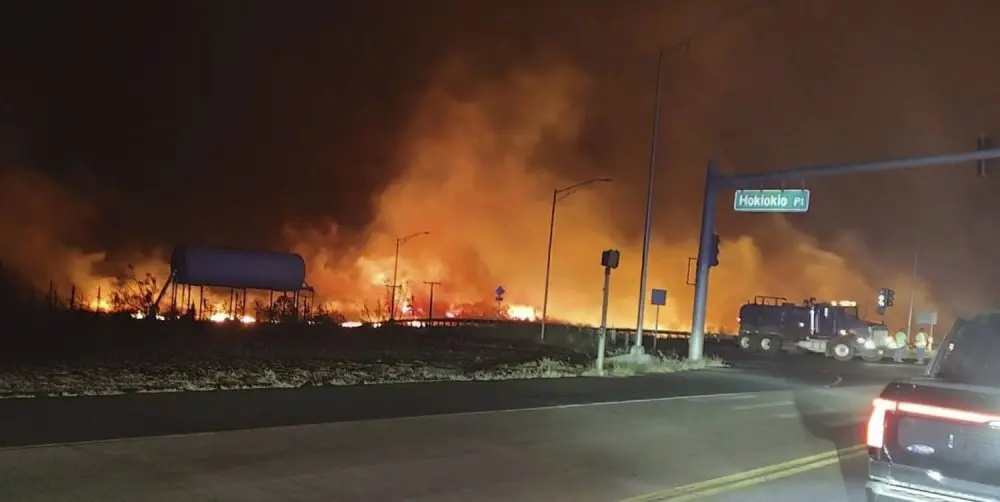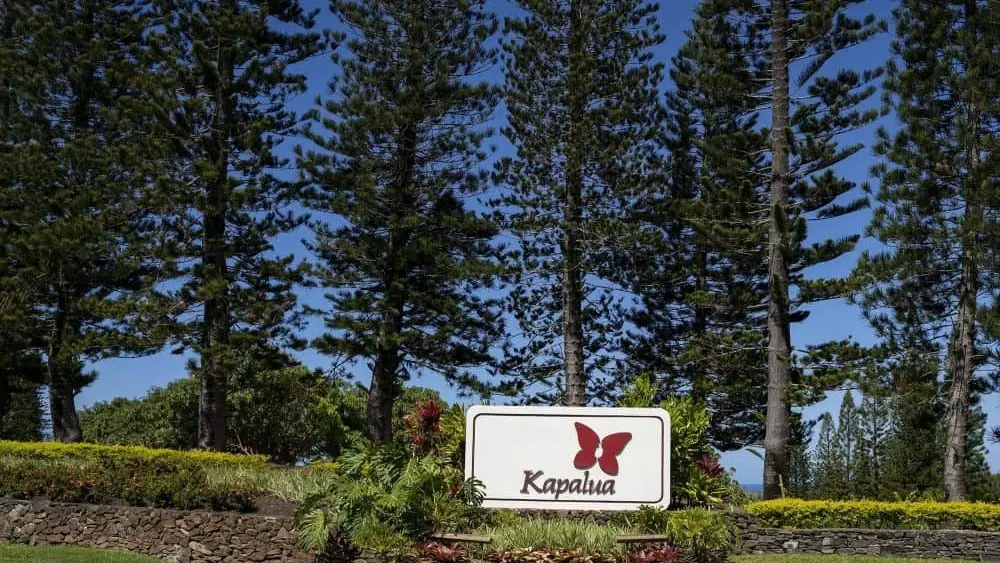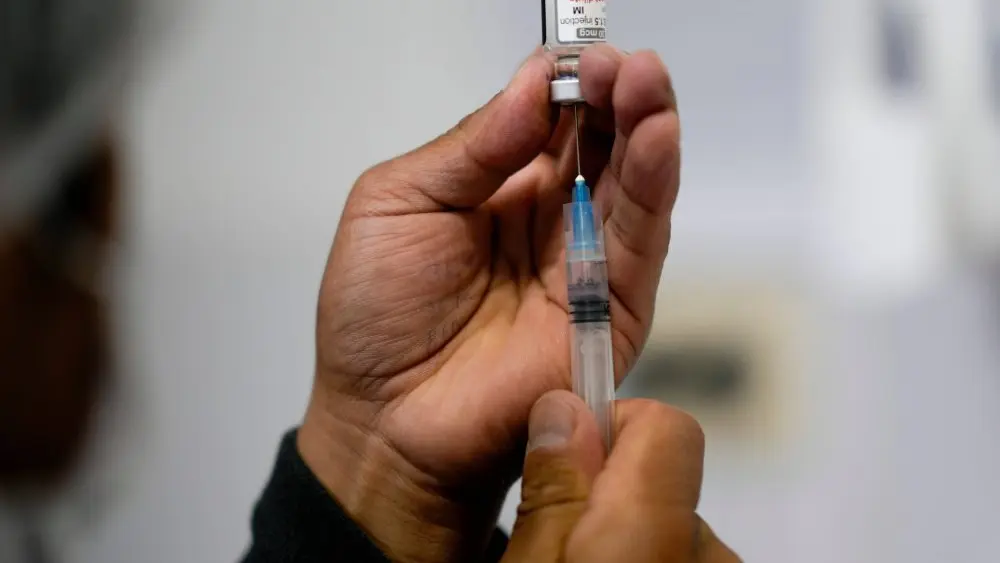(AP) – Maria Linz has worried about living in Lahaina since her family first returned to their smoke-damaged home in the Leialii area three days after the August 2023 disaster.
For months after the fire, dust and ash coated nearly every surface of her house on the northern outskirts of the burn zone, no matter how much she cleaned. Concerned about toxins, Linz decided to send her immunocompromised mother and elementary school-age son to live with a family member in California for a year. Her son has since returned and the amount of dust that blows into the home has decreased significantly, but Linz said she still fears that the air her family breathes may be unsafe.
“I am terrified about the health impacts and the future for everyone in Lahaina,” said Linz, the Lahaina Homeowner Recovery program manager for the nonprofit Hawaii Community Lending. “To this day, the dust that comes in isn’t the same. The dust now is black. It used to be red.”
State health officials have said Lahaina is safe for rebuilding — specifically, that the burn zone has been free of fire-related environmental concerns for residents and workers since September 2024, when the U.S. Army Corps of Engineers completed the arduous process of removing hundreds of thousands of tons of ash and wildfire debris from residential properties in the burn zone.
But as rebuilding efforts pick up pace, new research is suggesting that the area may not be as safe as residents were led to believe. Testing shows that Maui wildfire survivors who have been living or working in the burn zone are more likely to show evidence of long-term exposure to harmful heavy metals. They are also more likely to report negative health outcomes associated with exposure to those substances than fire survivors who have not been returning regularly to the area.
Researchers with the University of Hawaii’s Maui Wildfire Exposure Study say preliminary results of urine tests from more than 1,200 fire survivors suggest the burn zone may still be contaminated with heavy metals associated with heart, lung and mental health issues, as well as an increased risk of developing cancer.
Residents living back in Lahaina are telling researchers that they’ve experienced “worse health outcomes after moving back home,” said Ruben Juarez, a health economics expert at the University of Hawaii Economic Research Organization and one of the chief researchers of the Maui Wildfire Exposure Study.
The Corps of Engineers said in 2024 that it took hundreds of samples from the properties it cleared to make sure the land was safe for rebuilding. State health officials and their partners have also tested soil, sand, and nearshore water for various contaminants and screened blood samples from 557 people affected by the fires for lead, a metal the department said would be the equivalent of the canary in the coal mine for indicating exposure to other toxins from the fire. But the Corps only tested soil samples from what’s known as the ash footprint of buildings, where debris from a burned structure settled after the fire, according to Juarez and several property owners. The results of those tests are also only available to individual property owners, who must file a request with the Corps to obtain them.
Other experts point out that there’s very little research on the long-term effects of wildfire destruction on health, and that the level of toxins in an area affected by such a large fire is expected to remain elevated long after debris has been cleared. Limited sample testing, they say, would not necessarily indicate the amount of toxins in the surrounding area.
Most concerning to researchers is the failure of Hawaii health officials to warn residents about the possible risks associated with returning to the area.
Juarez emphasized that while people living in the burn zone were more likely to have higher amounts of toxins in their bodies, researchers have not been able to test soil samples from the burn zone or definitively prove that it is where the exposure took place. The study also does not include any individuals who were unaffected by the fires, which would provide an important baseline for how much heavy metal exposure is typical on Maui.
Researchers with MauiWES have been raising alarms about mental and physical health issues among fire survivors for more than a year and a half, but the recent lab results are the first time they’ve connected some of the problems to possible ongoing exposure.
Elevated levels of harmful heavy metals — including arsenic and nickel — were present in about 20% of the 1,236 study participants for whom the results of a urine analysis conducted earlier this year were available, Juarez said. Researchers were waiting for results from a few hundred more participants.
Many of those with high amounts of these toxins in their bodies were recently living or working in the burn zone, or had continued to live or work there. Many of them also displayed lower lung function, higher blood pressure and worse mental healthcompared to survivors who lived farther away from the burn zone, he said.
Ash samples collected from Lahaina and Kula after the 2023 wildfires showed dangerously high levels of arsenic, lead, antimony, cobalt and copper. But thousands of subsequent environmental samples of air, soil, beach sand and coastal water collected by the state health department and other agencies did not detect heavy metals in amounts that could impact human health, the department’s director of communications, Stephen Downes, said in an emailed statement.
The Corps’ official procedure for removing ash and testing soil within the burn zone appears to be acceptable under current standards and would have removed many of the toxins likely to have contaminated the area after the fire, said Dr. John R. Balmes, an expert on how pollutants affect health and a professor emeritus of environmental health sciences at the University of California, Berkeley.
However, exclusively testing soil from the ash footprints of cleared parcels would not necessarily provide a reliable indication of what environmental contaminants remain on other parts of the property, he said.
“I’m not surprised at all that the people who have been exposed more are having more problems,” Balmes said. “There is still ash that comes down from the smoke. I’m sure there’s been an effort made to clean the burn area, but can you get every single bit of soil that might contain toxic materials?”
Both Balmes and Juarez said wind and other factors could have dispersed ash and contaminated soil across the region. Jessica Yu, a research scientist at the Woods Institute for the Environment at Stanford University, said there have been studies showing that wildfire contaminants have been found miles away from where the inferno took place.
“There has been research to show that it lingers over time and over a considerable distance,” Yu said.
Balmes said that people should be reasonably assured that the testing done by state and federal agencies confirmed that the public health threat posed by the Lahaina wildfire has been significantly reduced since ash and debris removal was completed, but “you could never say that it’s 100%” cleared of toxins.
Both Balmes and Juarez also took issue with the Department of Health’s assertion that lead screening of 557 residents conducted between December 2023 and February 2024 provided a high level of reassurance that the wildfires “did not result in clinically significant exposure to contaminants in ash.”
Because the tests did not show widespread elevated lead exposure, health officials said they did not “expect to find health impacts caused by toxins in the wildfire ash,” State Health Director Dr. Kenneth Fink said in a May 2024 statement.
Lead is one of the heavy metals people are most commonly exposed to through wildfire smoke and ash, and it is usually reasonable to assume that the amount of lead found in blood samples taken from fire survivors would likely indicate any potential exposure to other toxins, Balmes said.
But “to say, ‘just because the lead levels weren’t high, we’re not worried at all?’” Balmes said. “It was a little strong.”
Those who live in or near the burn zone should make an effort to limit the amount of dust they are exposed to by wearing an N95 mask outside, especially if it is windy, and keeping an air filtration device in their homes, Balmes said. People who don’t want to shell out roughly $200 for an air filtration device can construct their own makeshift version by fixing a high-capacity air filter known as a MERV 13 on a box fan, he said.
“The most important thing is to keep exposure to the ash and the dust down as much as possible,” he said.
He added that any threat to public health will decrease over time.
Multiple Exposures Could Increase Risk
Much is still unknown about the wildfire’s continued impact on public health and the safety of the burn zone, Juarez and other researchers told state lawmakers last week. But preliminary findings are concerning and highlight the need for ongoing research and environmental monitoring.
“We just don’t know much about the ongoing exposures, and potentially the re-exposures as rebuilding plays out and people are returning back to their properties,” Alika Maunakea, another co-leader of the study, told lawmakers.
Maunakea said he is unaware of any concerted effort after the cleanup to continue monitoring for environmental toxins that might be leaching into the water supply or spreading in other ways.
“We suspect it could still be either present or there are potential sources of re-exposures in the environment,” he added. “We don’t know.”
Juarez said the study results indicated consistent exposure or multiple exposures to toxins, “like if people are being exposed at a park or at a community center or something like that on a regular basis, or if they are being exposed at home.”
“We’re just letting that data speak for itself at this point,” Juarez said, adding that he thinks more population-level analysis is needed.
The Department of Health discussed the study’s design with UH researchers, according to the statement provided by Downes, and department officials emphasized the need to account for factors unrelated to the wildfires that could impact findings, including diet, health history and naturally occurring metals in soils statewide. People can be exposed to arsenic by eating rice and seafood, according to the statement, and nickel was not elevated in ash samples.
“We do not have details on the final survey design and look forward to engaging with UH researchers,” the statement said. “The information as currently available to us would seem to limit the ability to make any conclusions.”
Damion Emeson, a bellman at the Honua Kai Resort & Spa who lost his home in the fire, said official statements about the safety of the burn zone failed to reassure many locals. Emeson worries that he could be breathing in harmful toxins every time he drives through Lahaina on his way to work.
“There’s a lack of trust with certain government agencies,” he said. “It’s not their families that are living there.”
Emeson plans to get tested for exposure to certain heavy metals and to make more frequent doctor’s appointments, he said, and hopefully that will be enough.
Linz, who still lives in Leialiʻi with her husband, son and dog Pheobe, said she has felt better — both physically and psychologically — since the Corps cleared the piles of ash that used to blow into her house and a volunteer organization remediated her home. But she still worries too.
“We won’t know for years if there was an impact or not,” she said. “By the time you know, it’s too late.”
Story originally published by the Honolulu Civil Beat and distributed through a partnership with The Associated Press.
AP Photo





